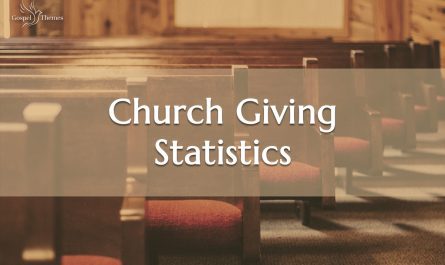The Bible is a masterpiece collection of religious texts and scriptures. In addition to the importance of the book in humanity, there are some fascinating Bible reading statistics.
The statistical data can also show us the latest trends and how the belief in God has changed through the years.
This brings us to the question is the Bible still the most-sold book in the world? How many Americans read it daily? How much time do you need to read the whole Bible?
Let’s reveal the answers to these questions and many other interesting statistics on Bible reading.

Overview of the Top Ten Bible Reading Statistics
- The full version of the Bible is currently available in 724 languages.
- 71% of Americans are interested in reading the Bible.
- Only 39% of Americans read the Bible three or more times per year.
- On average, you need 74 hours and 28 minutes to read the entire Bible.
- According to the latest data, 29% of the survey respondents read the Bible for 30 to 44 minutes on average.
- 26% of Americans don’t read the Bible because they don’t have enough time.
- 44% of Americans think they will be worse off without reading the Bible.
- 70% of Evangelical Protestants read the Bible, which is more than other Christian movements.
- Only 20% of US adults believe the Bible represents the actual word of God.
- A printed Bible is still the most preferred format among all generations.
General Statistics on Bible Reading
1. The full version of the Bible is currently available in 724 languages.
(Wylclif Global Alliance Group)
The full Bible has been translated into only 9.7% of the languages in the world, making it accessible to 5.9 billion people. Just as a reference, there are currently 7,388 known languages globally.
However, the New Testament is a segment of the Bible that is available in more languages. At the time of writing, the New Testament had been translated into 1,617 languages, targeting 11% of the global population.
On the other hand, people speaking 1,248 languages can read only segments of the Bible in their language.
These numbers are expected to be much higher in the near future.
The Bible is currently being translated into 2,846 languages in 157 countries worldwide.
Also, to get the whole picture, it is important to know that 1,155 languages that 10.3 million people use don’t need a translation of the Bible.
2. More than 5 billion copies of the Bible have been sold worldwide.
The Bible is the best-selling book ever. Although it can’t be calculated for sure how many Bible copies have been printed since the first Gutenberg Bible in 1454, the British and Foreign Bible Society gives a rough number between five and seven billion Bible units.
Did you know that above two billion units of the Bible were printed in the years between 1815 and 1975? Today, it is estimated that 80 million Bibles are printed per year.
The Bible is by far the most printed book in history. Falling behind on the list are the Quotations from Chairman Mao Tse-tung (more than 800 million printed volumes) and the Qur’an (at least 800 million copies).

3. 71% of Americans are interested in reading the Bible.
(State of the Bible Report 2023)
Nearly three in four Americans are eager to learn more about the Bible or Jesus.
However, the curiosity is not on the same level for every American. 22% of the Americans responded that they are extremely curious, 17% are very curious, 23% are somewhat curious, and only 9% are a little curious.
4. Only 39% of Americans read the Bible three or more times per year.
(State of the Bible Report 2023)
Unfortunately, the latest Bible reading statistics show that there have been fewer Bible readers in the last two years compared to the previous years.
In 2022, 103 million adult Americans were reading the Bible. However, the number dropped to 100 million in 2023, marking a decrease of three million readers.
In comparison, 53% of Americans in 2013 dedicated some time to reading the Bible. Today, there are 21 million fewer Bible readers than in 2013.
The most significant Bible readers drop in the last decade was recorded between 2021 and 2022, when the numbers fell to 103 million from 128 million.
5. According to the latest data available, 36% of US adults feel somewhat knowledgeable about the Bible.
(Statista)
Every third respondent in a survey conducted in 2018 feels somewhat knowledgeable about the Bible. Only 11% consider themselves highly knowledgeable of the Bible, while 26% think they know the Bible moderately.
18% of the respondents think of themselves as not too knowledgeable, while 8% have no knowledge about the Bible whatsoever.
6. On average, you need 74 hours and 28 minutes to read the entire Bible.
(CrossWay)
The Bible has two main divisions: the Old Testament and the New Testament.
The Old Testament is significantly longer than the New Testament; an average person can read it in 56 hours and 44 minutes. On the other hand, the New Testament can be read in 17 hours and 44 minutes.
Consequently, the average person can read the whole Bible in a little less than 74 hours and 30 minutes.
But how much time do you need to dedicate to reading to finish the whole Bible in one year?
The Bible reading statistics say that by reading the Bible for approximately 12 minutes a day, you will be done with the whole book in one year.
However, you can read the Holy Bible in 3 months if you set aside 38 minutes of your day for reading.

7. The shortest book in the Bible can be read in two minutes.
(CrossWay)
Many people use the excuse that they lack time to read the Bible. However, not everybody knows that there are books in the Bible that will take only two minutes of your time. The shortest books in the Bible are 2 John and 3 John.
Other books that can be read in less than five minutes are the book of Obadiah, Philemon, and Jude.
If you have a little more time, let’s say around 15 minutes, you can read the book of Ruth, Song of Solomon, Joel, Micah, Nahum, Habakkuk, Zephaniah, Malachi, and much more.
8. The Psalms require the most time to read, which is 4 hours and 51 minutes on average.
(CrossWay)
Generally, the longer sections of the Bible are from the Old Testament. The longest book in the Bible is the Psalms.
For instance, you will need 3 hours and 31 minutes on average to read Genesis, 3 hours and 51 minutes for the Book of Jeremiah, and 3 hours and 39 minutes for the Book of Ezekiel.
9. According to the latest data, 29% of the survey respondents read the Bible for 30 to 44 minutes on average.
(Statista)
The data from 2017 shows that the average Bible reading is almost constant, especially in the group that reads the Bible for 30-44 minutes on average. The survey showed that from 2014 to 2016, 30% of the respondents read the Bible for 30 to 44 minutes.
Next is the group reading the Bible for 15 to 29 minutes on average. This group counts 25% of the total respondents.
Furthermore, 23% of American respondents dedicate one hour or more to reading the Holy Bible.
The smallest percentage are the respondents who read less than 15 minutes and 45 to 59 minutes counting 17% and 6% in 2017, respectively.

10. 56% of the respondents in a survey in 2019 wished they read the Bible more often.
(Statista)
The percentage of people in the US who desire to read the Bible more is slowly decreasing. From 67% of the respondents who wished they used the Bible more in 2011, the number declined to 56% in 2019.
11. 26% of Americans don’t read the Bible because they don’t have enough time.
(State of the Bible Report 2023)
The main frustration regarding reading the Bible in America is not having enough time. Of the 26% of the total people who don’t have enough time, 31% are considered Scripture engaged, 28% as movable middle, and 19% of them are Bible disengaged.
Other reasons why Americans don’t read the Bible are
- Not knowing where to start (17%)
- Lack of excitement about the Scripture (16%)
- Difficulties with the Bible language (15%)
- Difficulties navigating the Bible layout (9%)
- Confusing books (8%)
12. 44% of Americans think they will be worse off without reading the Bible.
(State of the Bible Report 2023)
Compared to the statistics on the benefits of reading the Bible from 2020 and 2021, the number of people who think the Bible makes their life better is decreasing.
In 2021, 54% of the responses said their life without the Bible would be worse. Now, the latest data from 2023 shows a 10% decrease.
As a consequence, 41% of the survey respondents in 2023 believe their life would be about the same without the Bible. Unfortunately, that is a 2% increase from 2020.
On the other hand, the number of Americans who think their life will be better without the Bible has stayed the same from 2021 to 2023. One in seven Americans, or 14%, don’t see benefits from reading the Bible.
Demographics: US Adult Bible Readers
13. American women read the Bible more frequently than men.
(State of the Bible Report 2023)
41% of the surveyed women in America use the Bible at least three times a year. The number is lower in the male population, where only 36% of the men read parts of the Bible three or more times yearly.
14. 42% of American respondents above 65 years read the Bible at least once a year.
Americans above 65 years read the Bible more frequently than other generations. More than 40% of people aged 65 and more read the Bible at least once a week.
Conversely, 40% of the same age group never read the Bible. That leaves only 9% who read the Bible twice a month and 7% several times a year.
The statistics on Bible reading for other generations are similar. Most of them read the Bible at least once a week or never.
For instance, 27% of people aged 18 to 29 years read the Bible frequently, while 53% don’t spend time reading the Bible.
Furthermore, 34% of 30 to 49-year-olds read the Bible at least once a week. At the same time, 46% of their contemporaries never read the Bible.
Lastly, the percentage of 50 to 64-year-old Americans reading the Holy Book at least weekly and never is 39% and 43%, respectively.

15. 52% of the people in America who are separated read the Bible.
(State of the Bible Report 2023)
The Bible reading statistics show interesting results regarding the marital status of those who read the Bible.
52% of the separated individuals read the written words of God at least three times a year. Behind them are married and widowed people, with 42% of each considered Bible readers.
As for the divorced, 39% of the surveyed Americans read the Bible. Never-married Americans are least likely to read the Bible, with 70% of this group not reading the Bible.
16. 57% of black people use the Bible.
(State of the Bible Report 2023)
Black people living in America use the Bible the most compared to other races. Next are Hispanic Americans, of which 40% read the Bible.
35% of white people in America read the Bible. Lastly, 27% of Asian survey respondents use the Bible.
17. 70% of Evangelical Protestants read the Bible, which is more than other Christian movements.
(State of the Bible Report 2023)
There are different movements in Christianity. Hence, the Bible reading statistics show differences in their reading habits.
Evangelical Protestants and Historically Black Protestants read the Bible the most, counting 70% and 68%, respectively. 46% of the Mainline Protestants in America read the Holy Book.
Last are the Catholics, with only 37% reading the Bible.
18. Only 20% of US adults believe the Bible represents the actual word of God.
(Gallup)
Research by Gallup in 2022 shows that the number of US adults who believe the Bible is the actual word of God is drastically declining. Compared to the data from 1980, the numbers are twice lower.
With 40% of US adults in 1980 believing the actual words of God are written in the Bible, the number in 2022 has fallen to 20%. As a result, more people, or 29%, believe the stories in the Bible are moral precepts and historical events recorded by man.
Also, the statistics show that the percentage of people who think religion is important and those who take the Bible as the actual words of God are directly connected.
However, the percentage of people who believe the Bible is inspired by God but shouldn’t be taken literally, has stayed almost constant throughout the years. According to the latest data from 2022, 49% of the survey respondents share this opinion.
Bible Reading Trends
Modern times require modern practices. Hence, the statistics on Bible reading have been affected by the modern era of Bible apps, preaching podcasts, and various websites explaining the Bible verses and their meanings.
19. A printed Bible is still the most preferred format among all generations.
(Statista)
A survey conducted in 2019 showed that the majority of Americans still prefer to read a printed version of the Bible. Here are the results by generation groups:
- 91% of the elders
- 80% of the Boomers
- 64% of Gen X
- 63% of Millenials
However, with the younger generations, Bible applications are the best option for reading the Bible. 27% of Millenials, 26% of Gen X, 9% of Boomers, and surprisingly, 2% of the elders want to use a Bible app.
Audio Bible formats are also preferred by 5 % of Gen X and elders and 4% of Boomers and Millenials. Online Bible versions are favored by 5% of Boomers, 4% of Gen X, 2% of Millennials, and 1% of elder survey respondents.
18. The YouVersion Bible App has been downloaded more than 500 million times.
The YouVersion Bible App is the most popular free online Bible App. The app has been installed on over 100 million Android devices since its release.
The YouVersion Bible App was in the first 200 free apps available on the App Store. The Bible App now counts over 500 million downloads from iOS operating devices.
19. In 2021, the podcast “Bible in a Year” had 238 million downloads.
(Aleteia)
With the rise of technology, priests are seeking ways to bring God’s word closer to the people. One of the ways Fr. Mike Schmitz from Minnesota teaches about Christianity is through everyday podcasts.
One year after its first launch, the Bible in a Year podcast recorded 230 million listeners. The podcast even made it on the list of top ten Apple podcasts.
Conclusion
Analyzing the Bible reading statistics is important. Although fewer people read the Bible on a regular basis, the desire to spend more time reading God’s words has stayed the same.
Currently, the most preferred Bible format is a printed copy. However, we can expect changes in this field with the new generations and digital trends as podcasts and digital versions of the Bible are becoming a hit.
Ultimately, the importance of the Bible can’t be overstated, but we must use the statistics on Bible reading and see where there is room for improvement.
Sources
- Aleteia
- App Store
- CrossWay
- Gallup
- Google Play
- Guinness World Records
- Pew Research
- State of the Bible Report 2023
- Statista
- Statista
- Statista
- Statista
- Wylclif Global Alliance Group

 by
by 

